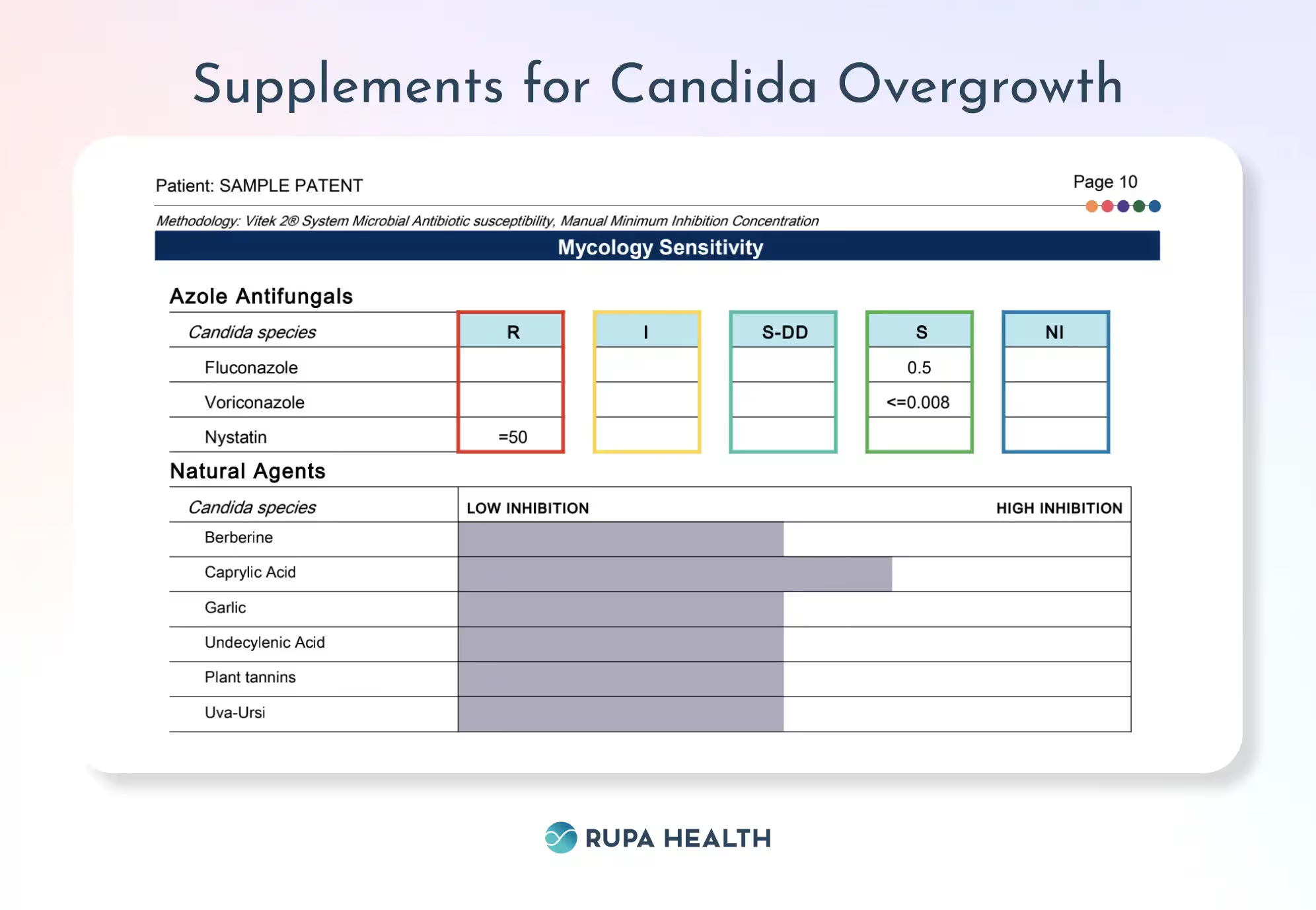You've probably heard the word "candida" as well as all the "candida diets" and "candida cleanse" lately. It's become quite the popular marketing phrase. But with all the negative press around it, you may not know that candida is actually a naturally occurring fungus that grows in and on our bodies.
Candida Albicans, the most common yeast in the human body, commonly lives in the gut, mouth, throat, vagina, and skin. Under the right circumstances, it is part of a healthy microbiome and usually doesn't cause any harm.
However, sometimes conditions are perfect for Candida Albicans to grow more than usual, which may lead to an imbalance known as candidiasis, or candida overgrowth. When this happens, some people might experience issues like skin rashes, yeast infections, and digestive discomfort.
[signup]
Reasons for Candida Overgrowth
Candida can grow more than usual for many reasons, but one of the most common reasons is dysbiosis (an imbalance of the good vs bad gut bacteria). The health of your digestive system relies heavily on the good bacteria that live in your gut to help keep other organisms in check. Once your gut microbiome is disrupted, candida can multiply more easily.
Common Reasons for Dysbiosis
- Antibiotic use (these can affect both bad and good bacteria)
- Autoimmune Disease
- Having a weakened immune system (HIV, Chemo, etc.)
- Diabetes
Lifestyle-Based Reasons for Dysbiosis
- Eating a diet high in refined carbs or sugar
- Excessive alcohol consumption
- High levels of stress (chronic stress may affect the immune system and can disrupt the gut microbiome)
Candida Signs & Symptoms
Frequent Yeast Infections
Many women will get a yeast infection at some point in their life, but if you experience frequent yeast infections, it might be helpful to explore the possibility of candida overgrowth with a healthcare provider.
GI Problems
The overgrowth of candida in the GI tract can lead to symptoms similar to IBS, such as bloat, pain, constipation, and diarrhea. If not addressed, the overgrowth of candida might affect the lining of your gut, potentially leading to increased gut permeability.
Current studies indicate that an overgrowth of candida is also associated with gastric ulcers, ulcerative colitis, and Crohn's disease.
Frequent Urinary Tract Infections (UTI)
UTIs are commonly caused by bacteria, but Candida Albicans is an opportunistic fungal organism that can grow in the urinary tract, potentially contributing to chronic UTIs.
While this is a less common reason for chronic UTIs, it shouldn't be ignored if you have other candida overgrowth symptoms.
A clean catch urinalysis test can help determine if your UTI is related to bacteria or yeast.
Thrush
A thin white coat on your tongue is considered normal. But if you notice a thicker white coating on your tongue, cheeks, throat, or the roof of your mouth, it could be a sign of oral thrush, which may be related to candida overgrowth.
Frequent Skin Infections or Nail Infections
Candida normally lives on the surface of the skin. But sometimes, the fungi can make their way beneath the skin or nail's surface and cause an infection.
Since candida prefers warm, moist environments, the infections often form between skin creases or folds like the armpit, groin, torso, or under the breasts.
Functional Medicine Labs to Test for Candida
Comprehensive Stool Test
A comprehensive stool test can check for Candida Albicans overgrowth and help identify possible reasons for the candida overgrowth, such as dysbiosis or inflammatory markers. Retesting a few months into care allows for any modification that may be needed.
SIBO Breath Test
If you suspect candida overgrowth, it's also essential to rule out SIBO. SIBO, an overgrowth of bacteria in the small intestine, is sometimes found in individuals with candida overgrowth. Addressing SIBO can be important for a comprehensive approach.
Blood Test
A candida profile blood test is another way to explore candida overgrowth. These tests look for an IgG, IgA, or IgM reaction to the fungus. This method is often used alongside a comprehensive gut health test, food sensitivity test, or SIBO test.
Functional Medicine Approaches for Candida
Approaches and antifungal options vary depending on where the candida has grown. A common approach is to follow a version of the "Anti Candida Diet."
Nutrition for Candida Overgrowth
"The Anti-Candida Diet is a low-sugar, anti-inflammatory diet that supports good gut health. The diet includes non-starchy vegetables, low sugar fruits, non-glutinous grains, fermented foods, and healthy proteins."
Probiotics for Candida Overgrowth
Good quality probiotics have been shown in studies to help manage candida in different organ systems of the human body. A comprehensive stool test can help identify which probiotics your gut microbiome may benefit from.
Supplements for Candida Overgrowth
Caprylic acid, oregano oil, garlic, and berberine have been shown in studies to support the management of candida overgrowth. Consider utilizing the GI Effects comprehensive stool test for a more personalized approach. This assessment can help identify which prescriptive and natural agents may be effective at supporting a balanced microbiome.

Summary
Candida Albicans are naturally occurring fungi that live in and on our bodies. Keeping our gut healthy and balanced can potentially support our body's natural defenses against fungal overgrowth. If you suspect you have candida overgrowth, it is best to confirm your concerns by working with a healthcare provider before making changes at home. Lab testing can help ensure a targeted and effective approach.












%201.svg)







